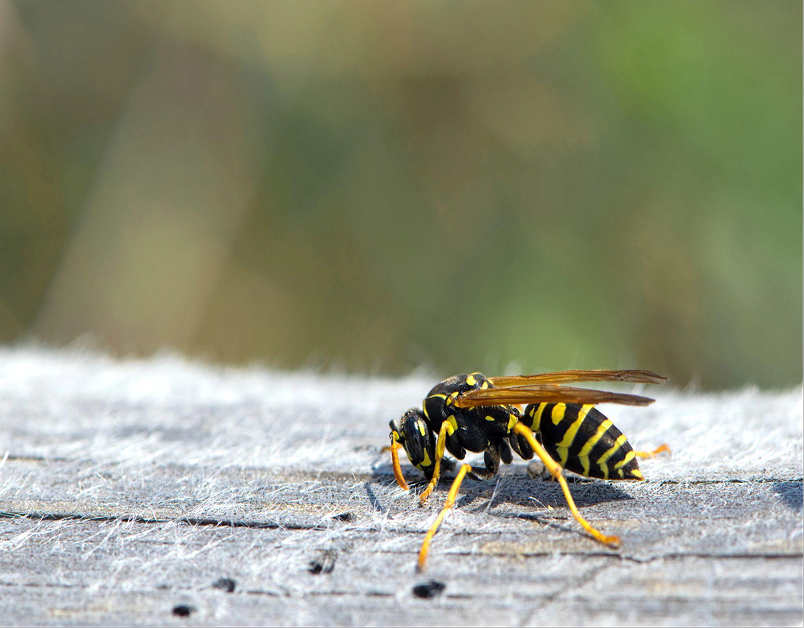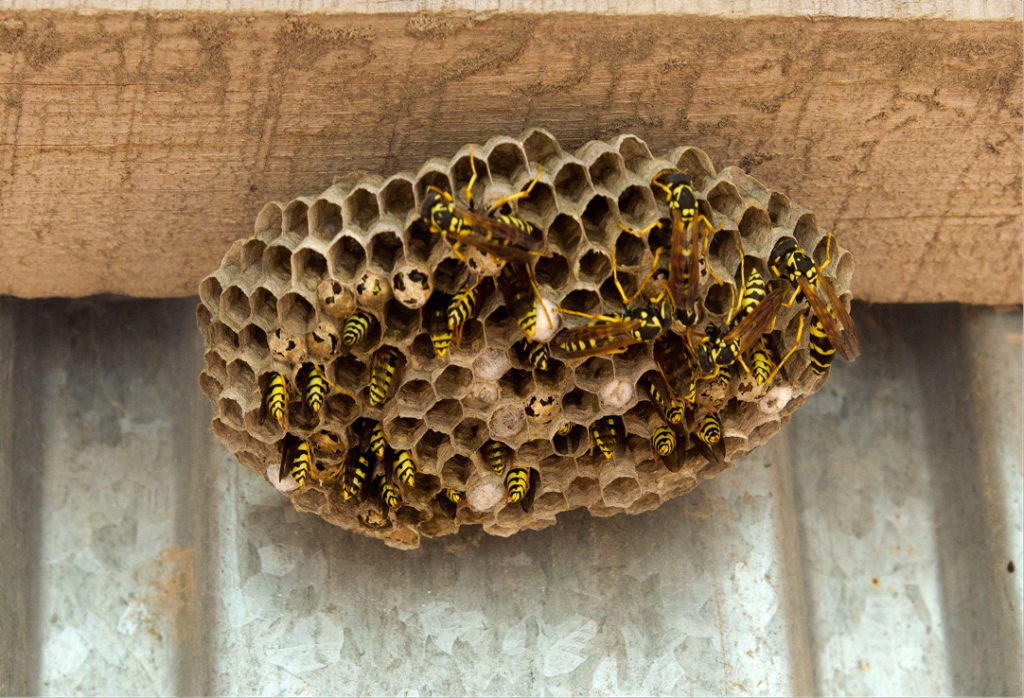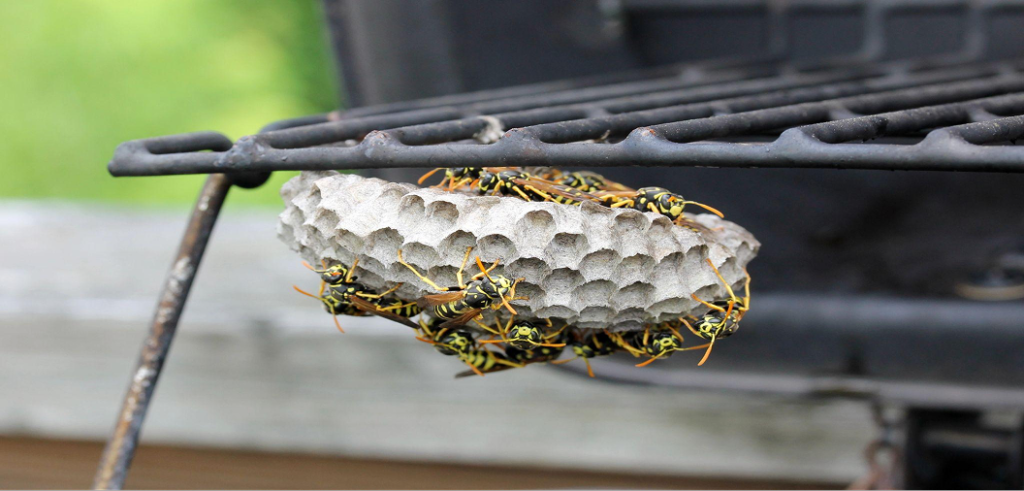Whether your outdoor plans involve backyard barbecues, ample time by the pool, or simply relaxing outside with a crisp glass of lemonade this summer, one thing is true: you probably don’t want wasps buzzing around your head the entire time.
Whether you’re in Simpsonville, Greenville, or anywhere else in the Upstate area, yellow jackets are a common sight, especially in the late summer and early fall when their colonies are at their peak population.
Understanding the yellow jacket wasp life cycle is your key to avoiding (and ideally, getting rid of) these pests, but it’s more complicated than you might think. In this post, we’ll tell you what you need to know about their patterns, as well as why professional pest control is the key to preventing future infestations. Spring: When the Queen Wakes Up and Takes Charge
Spring: When the Queen Wakes Up and Takes Charge

If there’s anyone with an important job to do, it’s the yellow jacket queen. In fact, every yellow jacket colony begins with just a single queen whose job it is to create the future generation of yellow jackets.
Overwintered queens begin to emerge from their hibernation sites in April or May as temperatures rise. These queens are easy to miss as they quietly scout out their ideal nesting site. Some popular spots include soil cavities (like abandoned rodent burrows), hollowed-out tree stumps, or even nooks and crannies around your attic, porch, or shed.
Once the queen selects her site, she builds a small paper nest using wood fibers that she chews into pulp. This will serve as the foundation of the new colony. She lays the first batch of eggs, which hatch into larvae and then grow into adult worker wasps over the next few weeks.
These first workers take over the tasks of expanding the nest, foraging for food, and caring for new larvae, leaving the queen free to focus solely on egg production.
The result of this initial stage of the yellow jacket wasp life cycle? Your yard could be buzzing with activity (and an active yellow jacket nest) before summer arrives, even if you haven’t noticed it yet.
Summer: The Colony Grows

As summer begins, yellow jackets shift away from stealth mode and into a stage of rapid growth. Fueled by warm temperatures and plenty of food, worker wasps forage, bringing back a mixture of protein (in the form of insects and other arthropods) to feed their larvae, and sugary substances (like nectar) to feed themselves.
By August, a single colony can house several hundred workers. The nests expand, growing larger underground or spreading across above-ground structures. Made of paper-like layers of comb, these nests appear deceptively fragile, but are actually intricately engineered for survival and efficiency.
Summer is when yellow jackets are most likely to cross paths with humans. Although they work hard to avoid us during the spring, they become more noticeable as their foraging activities increase. And as their colony grows, so does their aggressiveness, particularly if they feel their nest is threatened.
Fall: Aggression and Reproduction Peak

Late summer and fall mark the tail end of the yellow jacket’s life cycle, and this is when things get complicated (and in some cases, more dangerous). The colony’s population hits its peak, with workers reaching numbers in the thousands for some species. They’re also hungrier than ever, as their normal food supplies start to become scarce.
It’s this season, therefore, that yellow jackets disrupt picnics, outdoor events, and garbage bins, scavenging for sugary snacks and protein-rich leftovers.
By now, the queen has shifted her focus to producing new queens and males. These reproductive members leave the nest for mating flights, which will ensure the species’ survival into the next year. Once mating is complete, the males die off, and the fertilized queens seek a safe place to hibernate for the winter. The old nest, along with the original queen and workers, declines and dies off with the first hard frost.
But make no mistake: fallen leaves and cooler temperatures don’t mean you’re off the hook. Those mating queens are quietly laying the groundwork for next spring’s colonies.
What to Do About the Yellow Jacket Wasp Life Cycle
Here’s some bad news: there’s nothing you can do about the life cycle of a yellow jacket, and really, there’s nothing you should do. Although we consider them to be nothing more than stinging pests, yellow jackets play an important role in the environment by preying on harmful insects.
Nevertheless, they can be dangerous, as their smooth stingers allow them to sting multiple times. Encounters can be especially painful or even life-threatening for those with allergies.
Our temperate climate here in Simpsonville, along with the yellow jacket’s adaptability, means they’re found everywhere. They can nest in a variety of locations, from suburban yards to wooded areas.
The earlier you address a yellow jacket infestation, the safer it is to manage. During the spring, nests are small and contain fewer workers, reducing the risk and complexity of removal. Once summer hits, however, the nests grow exponentially in size. Attempting DIY removal can quickly escalate into a swarm of angry wasps. Not fun.
That’s why you should always call in professional pest control if you’re dealing with a yellow jacket problem, especially if it’s early summer or later. We offer a safe, effective way to deal with yellow jacket nests at any stage of the life cycle. Plus, we have the tools, protective gear, and know-how to eliminate nests without putting you or your family at risk.
Protect Your Yard with Action Pest
Don’t wait until yellow jackets turn your backyard into a no-go zone. Instead, make it a no-fly zone for them.
Whether you’ve already spotted a nest or you just want to prevent one from forming, Action Pest is here to help. With years of experience serving Simpsonville and the Upstate area, we know a thing or two about how to tackle yellow jackets. Our team of expert exterminators will handle the problem quickly, safely, and effectively.
Ready to get back a yard you can enjoy? Call us today. The sooner you act, the sooner you’ll put an end to the yellow jacket wasp life cycle in your backyard.
